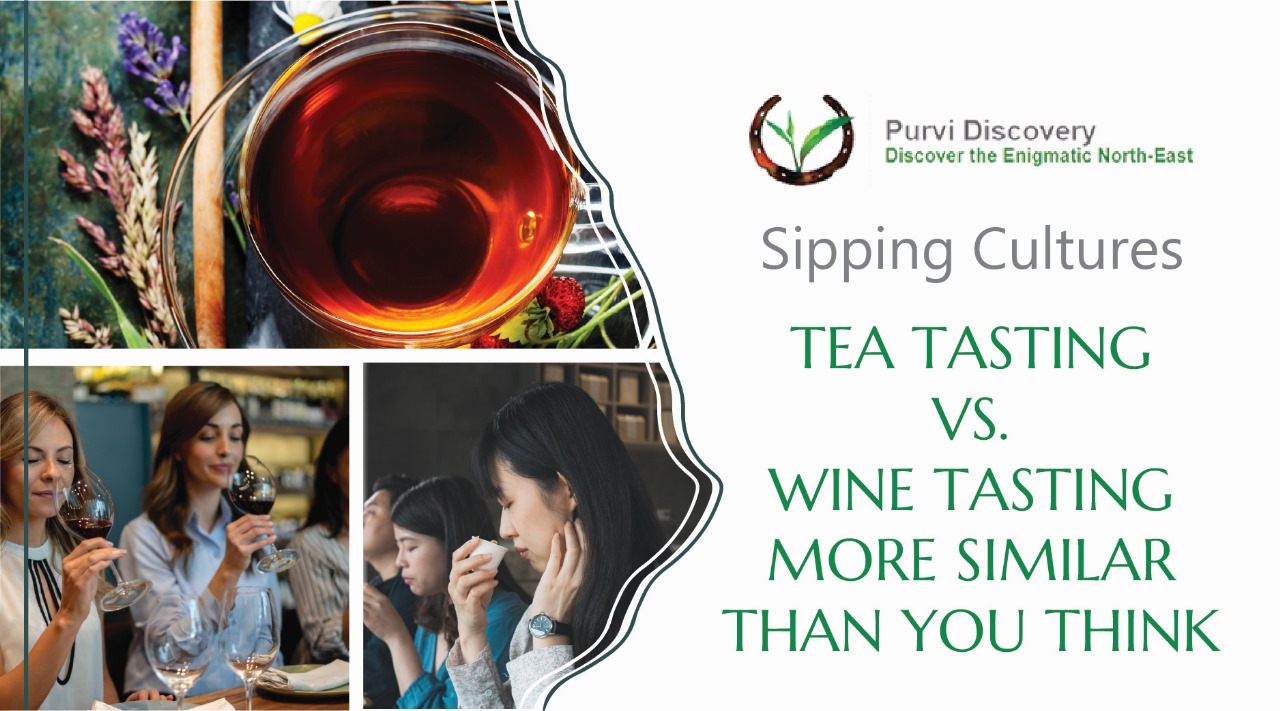Tea Tasting And. Wine Tasting More Similar Than You Think
When we think of tasting rituals, our minds often drift to the elegance of avineyard — swirling reds, sunlit glasses, and the ar t of savoring. But journey eastward to the misty tea estates of Assam, and you'll discover a tasting experience just as rich, just as nuanced, and deeply steeped in tradition. Tea and wine, though vastly dif ferent in origin, share remarkable similarities in how they’re cultivated, tasted, and appreciated. For discerning travelers, especially those familiar with wine trails in Bordeaux or Napa, Assam’s tea estates offer an unexpected — and exquisite — counterpart.
Terroir: Where It Begins
Just as grapes are shaped by their region’s soil, rainfall, and elevation, Assam tea owes its bold character to the Brahmaputra Valley — hot, humid, and fer tile.
The varietal grown here (Camellia sinensis var. assamica) is known for producing full-bodied, malty teas with deep color and robust flavor. In both tea and wine, terroir defines taste. From the mineral notes in a Sauvignon Blanc to the briskness of a second flush Assam, the land speaks through the leaves and the vines.
The Tasting Ritual
Wine tastings are an elegant ritual: swirl, sniff, sip, savor. But tea has its own sensory choreography. At a formal tea tasting, guests are invited to: Obser ve the dry leaf for color and curl Inhale the aroma of freshly infused leaves Taste for body, brightness, and briskness Both experiences are about discernment — noticing texture, balance, and finish. And both, ultimately, are about slowing down.
Tannins: The Bittersweet Connection
A lesser-known but fascinating similarity? Tannins. These natural compounds are responsible for the astringency in both wine and tea
In red wine, tannins come from grape skins and give the wine its structure and aging ability. In black tea, tannins develop during oxidation and lend that dry, slightly bitter finish — especially notable in a strong cup of Assam.
When properly balanced, tannins in both beverages create complexity and mouthfeel. When over-extracted, they can overpower. Tannins, in many ways, are the fine line between sharpness and sophistication.
Heritage & Hospitality
Where vineyards offer rustic estates and tasting rooms, Assam’s tea estates offer grand colonial bungalows, wraparound verandas, and legacy hospitality.
With Purvi Discovery, guests can stay at heritage planter’s homes, sip golden second flush on a veranda at dawn, and explore working factories with master blenders.
The narrative is strong in both — stories of generations, cultivation, craft, and care.
Heritage & Hospitality
Where vineyards offer rustic estates and tasting rooms, Assam’s tea estates offer grand colonial bungalows, wraparound verandas, and legacy hospitality. With Purvi Discover y, guests can stay at heritage planter’s homes, sip golden second flush on a veranda at dawn, and explore working factories with master blenders.
The narrative is strong in both — stories of generations, cultivation, craft, and care.
Two Worlds, One Language of Taste
Tea and wine are more alike than we realize. Both are meditative. Both are agricultural. Both reward patience, knowledge, and presence.
And both, in their own way, are a way of life.
For travelers who have toured the vineyards of France or California, Assam’s tea trails offer a new kind of refinement — quieter, ear thier, and just as rich.
Travel Assam’s Tea Estates with Purvi Discovery
Because the next great tasting experience might come not in a glass — but in a hand-painted cup
